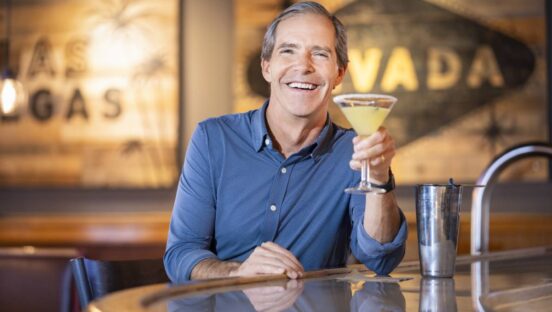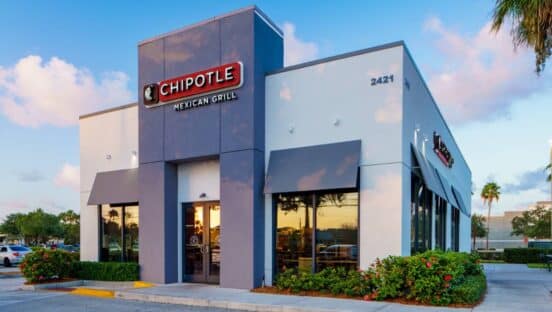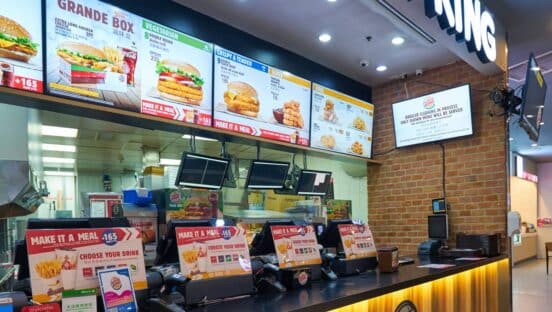The drive-thru operation of a quick-service restaurant may seem relatively cut and dried, but operators aren’t resting on their laurels when it comes to their outdoor business. For many brands in the industry, the drive thru can account for anywhere between 50 and 70 percent of sales—no small number in a $200 billion industry.
For the last 14 years, QSR has challenged operators to improve their drive-thru business through the Drive-Thru Performance Study, a proprietary report co-owned by QSR and Columbus, Ohio–based Insula Research. And in the report’s first decade, operators rose to the challenge; over that time, brands fine-tuned their operations and improved on elements such as speed and accuracy.
However, it became clear that a number of brands stood above the rest in the drive-thru business. So in 2011, QSR and Insula Research debuted the benchmark group of the best brands in drive thru, including six permanent brands—McDonald’s, Chick-fil-A, Wendy’s, Burger King, Krystal, and Taco Bell—along with one rotating regional chain, which was Del Taco in the benchmark group’s inaugural year.
This year, we take a look at how the six mainstays—along with 2012’s regional chain, Bojangles’—have fared since we launched the benchmark group. Have speed and accuracy really hit a wall? Did crewmembers get a refresher course on “please” and “thank you”? And can cleanliness really affect the overall drive-thru experience? Read on to find out.
The reverse tales of speed and accuracy
The two easiest gauges of a drive thru’s health, speed and accuracy remain the two strategies at the top of every operator’s drive-thru manual. And according to this year’s data, the benchmark group continues to post stellar numbers in accuracy. Burger King has the lowest rate with 83 percent accuracy (6.7 percentage points lower than its performance last year), while Chick-fil-A is tops with 92.4 percent. McDonald’s (90.9 percent), Taco Bell (91.2), and Wendy’s (89.9) all improved over 2011.
However, since the high-water mark for speed in a drive thru came courtesy of Wendy’s in 2003 (at an eye-popping 116.2 seconds), speed has tapered off for nearly every brand in the study.
That trend continued this year. Wendy’s is the only brand to improve on its average service time over last year, which it did with gusto by clocking in at an average 129.75 seconds, nearly 16 seconds better than last year. Denny Lynch, senior vice president of communications at Wendy’s, thinks there is always room for operators to improve upon their drive-thru speed. Menu proliferation, he says, is one thing that has possibly driven average service times up over the last several years.
“You want a chicken sandwich, and you want mustard, pickle, onion on it? OK, I get the chicken fillet, the mustard, pickle, and onion, put it on a bun, wrap it up, and you’ve got it,” Lynch says. “You want a smoothie? OK, I’ve got to get the ingredients, I’ve got to portion out the ingredients, I’ve got to put it into a blender and smooth it.
“Because of that, you put the stress on the speed of service at the pick-up window. … I think that has influenced the total speed of service.”
Brian Baker, president of Insula Research, confirms that complex menus are likely to blame for the fact that drive-thru speed has plateaued the last seven or eight years. While he suggests it’s not necessarily a bad thing that speed hasn’t continued to improve—“If you get any faster … your consumer is going to start to feel rushed”—he says pre-sell menuboards sometimes help speed up drive-thru service time.
“The benchmark group is primarily national chains, but I would expect to see more of a dramatic impact [from pre-sell boards] if you were a regional player and you’re looking to expand the geography where you operate,” Baker says. “When you’re going into new markets, I think they would be even more important, that you give people the opportunity to familiarize themselves with your menu before they get to the order point.”
The Performance Study shows that Baker is right; Bojangles’, the lone regional chain in this year’s study, sees average service times increase nearly 30 seconds in units with pre-sell boards compared with units without the boards.
Pre-sell boards don’t improve service times everywhere, however. Two of the benchmark chains, McDonald’s and Burger King, have better average service times at units without pre-sell boards than those with the boards.
Lynch says Wendy’s pays attention to small details in its kitchen and assembly areas to help push service times down. For example, something seemingly negligible like the position of the fridge door handle can affect the speed with which a crewmember can get food out of the window.
“One of the things that we’re constantly looking at is, How do we prepare for our rush periods and a pre-rush period?” he says. “How can we get our condiments, utensils, napkins, and all of that prepared, so that when a lunch rush comes, you’re highly efficient? You’re not having to run to the back room to get supplies; they’re all appropriated by the pick-up window right in your space. So those are things that you’ve really got to be ready for.”
Similarly, executives at Bojangles’ believe they can shave seconds off their service time by paying attention to the little details. And for a chain that offers more complex menu items like mac ‘n cheese, green beans, rice, and pinto beans, Bojangles’ needs all the efficiencies it can get.
Kenneth Avery, vice president of operations at Bojangles’, says these efficiencies include limiting the number of suggestive sells and teaming the same drive-thru crewmembers regularly so they learn to work well together.
“One of the things we did in our [operators instructional] DVD is we told people that, ‘Hey, every time out the window is a second,’” Avery says. “So we started setting things like, two or more drinks automatically go in a carrier; now you’re out the window one time instead of passing the drinks out individually. So we’ve looked at some of those things as a way to speed up the line.”
At Krystal, average service time climbed from 155.9 seconds in 2011 to 175.94 in 2012. CEO Doug Pendergast, who joined the brand in April, says the company is actively retooling its strategies to improve its average service time. One of the ways it’s doing that, he says, is by re-examining the menu options offered on the drive-thru menuboard and focusing solely on the brand’s core items. Krystal is also reconfiguring the ways in which it analyzes drive-thru speed.
[pagebreak]
“With speed, we’ve actually shifted our focus away from total transaction time and are focusing just on the window time, and within window time, we’re focusing less on the average and more on the distribution,” Pendergast says. “I don’t know that another 10 seconds makes a huge difference to a guest, but if we can eliminate the five-minute, seven-minute, [and] 10-minute transaction entirely, that, I think, will drive a more meaningful customer satisfaction.”
Speed is also relative among the benchmark chains. While Wendy’s, Taco Bell, Bojangles’, Krystal, and Burger King all had fewer than two vehicles on average in the drive thru, McDonald’s and Chick-fil-A—Nos. 5 and 6, respectively, in drive-thru service time—each had more than double that (Chick-fil-A had a whopping 5.37 vehicles on average).
“We always look for opportunities to increase capacity and improve accuracy,” writes McDonald’s spokeswoman Danya Proud in an e-mail to QSR. “Finding ways to make the drive-thru easier for our employees to operate and having greater capability to meet the needs of our customer is always a top priority.”
How to manage capacity
In the last several years, McDonald’s and Chick-fil-A have each attempted to ease the strains of busy drive thrus by employing a two-lane system in many units. These operations split cars into two ordering stations, after which the lanes flow back into one line for payment and pick-up.
“Growing the drive-thru business requires matching the capacity of a drive-thru layout with the customer demand,” Proud writes in her e-mail. “Multiple lanes provide the ability to have multiple order points, which is an effective way to increase the number of guests a restaurant can serve.”
Though such a system has worked effectively for McDonald’s and Chick-fil-A, other brands interviewed for this story admit that, while it’s something they’ve explored, customers pulling through their drive thrus shouldn’t expect to see multiple lanes any time soon.
“Multiple lanes and windows are helpful to alleviate bottlenecks,” writes Rob Savage, chief operating officer of Taco Bell, in an e-mail to QSR. “However, our experience has shown that these solutions can be expensive to implement and are only used situationally.”
Rather than invest the capital in multiple drive-thru lanes, many brands are exploring the idea of the line buster. Representatives of McDonald’s, Bojangles’, Krystal, and Wendy’s all confirmed that line-busting technologies are either used or in development throughout their systems. While Lynch says Wendy’s employed line busters as many as 30 years ago to keep the drive-thru line moving, innovations in tablet and POS technology have given operators new opportunities to streamline through an outside order-taker.
“When you’re in a situation where you’ve got great volume, great velocity, and you need to get more cars in and off your lot, an outside order-taker can be one of those things that can help you do that,” Bojangles’ Avery says. “That outside order-taker [also] allows us to be more accurate, because we’re having that person interact directly with the customer and then relaying that inside in our language, so we know exactly what our customers want to get it right.”
Meanwhile, executives at Krystal have their eye on other futuristic ideas to help improve efficiencies in drive-thru capacity. Pendergast says he could see mobile ordering finding its way to the Krystal drive thru soon.
“[I see] the ability of a customer to either call ahead or interface with us on an iPhone application, say, ‘I’m going to be by between 2 o’clock and 2:15, I’d like 48 Krystals to go,’ and to have those items prepared and in place, perhaps using their iPhones to make that payment already,” he says. “All they have to do is swing around, pick it up, and they’re off and running.”
The most crucial element in drive thru?
Pendergast says that at Krystal, cleanliness is one of the most critical elements to the drive thru—even as he admits the company could be doing a better job with it.
The good news for Pendergast and other operators is they seem to be doing a fine job at cleanliness. Data shows that at least 98.3 percent of the exteriors of each surveyed chain’s units were “favorable.” Similarly, no brand did worse than 98.7 percent on menuboard cleanliness, while 99.4 percent or more of units at each surveyed brand had clean temporary signage.
But that doesn’t mean companies can rest easy on the cleanliness front. Pendergast says Krystal has a system-wide cleanliness program that involves training, measurement, and preventative maintenance, and that the company is tripling the frequency with which in-house maintenance teams visit restaurants.
Bojangles’ has a similar commitment, as its managers do a walk-through of their units every hour to make sure everything is spic-and-span. “Customers that are visiting your drive thru are not coming inside, so they make impressions of your business and how you execute based on how you keep the outside, the landscaping, the drive-thru lanes, the windows at the pick-up window, Dumpster gates, all of that stuff,” Avery says.
Dumpster gates seem to be the one cleanliness component currently lacking in the drive-thru industry. According to the Performance Study, the vast majority of units’ Dumpsters are visible from the menuboard. A full 94.2 percent of Bojangles’ units have a visible Dumpster, while Burger King has the lowest amount, at 66.4 percent.
Shaping the customer’s purchasing decision
Drive-thru menuboards and temporary signage may be clean across the quick-service industry, but benchmark brands are working diligently to strategically use signage to maximize the drive thru.
“We’ve decluttered a lot of our menuboards, making them easy to read for customers,” Avery says. “We think if they’re easy to read, from font size and pictures and whatever the case may be, that they can order quicker and we can keep the line moving.”
Krystal is also using its signage to improve upon the drive-thru experience. Pendergast says it’s working with business partner Coca-Cola to transform the menuboard so it’s organized better, with different bundles and revised pricing structures.
“We believe, in addition to the marketing and promotions, that the pre-sell board and the menuboard are the key tools we have to shape and influence the customer’s purchasing decision,” he says. “So we’re looking to make it easier for them to buy what they’d like to buy; easier to evaluate their choices; and encouraging them to buy items that we think will drive not only satisfaction, but will be efficient for the kitchen and the team to execute.”
With the exception of Chick-fil-A, benchmark brands continue to put a heavy investment in another visual tool: order confirmation boards (ocb). Every brand in the benchmark group increased its percentage of units with an OCB (even Chick-fil-A went from 8 percent of units with an OCB to 12.2 percent this year).
“We’ve found that customers truly appreciate seeing their order keyed in right after they order it, and that helps them make certain that they’ve said everything they wanted,” Wendy’s Lynch says. “Sometimes customers forget that they wanted a Frosty, or they forget to tell us. So it’s verification, but it’s also verification that the employee heard them correctly and keyed it in correctly.”
[pagebreak]
The “please” and “thank you” effect
In last year’s study, Baker claimed customer-service numbers were lower than he expected, and that the benchmark brands had room to improve. This year’s data shows companies have work left to do. While the total percentage of units that said “please” climbed from 53.7 to 57.2 percent, the same tally for “thank you” fell from 86.6 to 85.9 percent. Meanwhile, only 37.8 percent of total units were “very friendly” and 37.4 percent were “pleasant,” down from 38.5 percent on each attribute a year ago.
“Even with pleasant demeanor, I’m thinking, why would that not be 100 percent?” Baker says. “OK, so maybe 98 percent because everybody has a bad day, but it just seems like a no brainer to me. I’m still scratching my head on that.”
Brand representatives nonetheless claim customer service is near the top of their drive-thru priority list.
“Part of it is to make certain we are hiring the right people,” Lynch says. “Wouldn’t it be nice if [the drive-thru crewmember] had a great personality? Wouldn’t it be nice if they could smile at you? Wouldn’t it be nice if they could say, ‘Thank you, come back again’? So you hire people that have that personality and the skill level to be able to do that. … You can’t just assume that they can handle every situation until they’ve done thorough training.”
Pendergast says Krystal also pays close attention to the personalities of crewmembers it hires for the drive thru—“If mom and dad haven’t coached you on [‘please’ and ‘thank you’], it’s too late for us to do so,” he says—but that employees must also know how to react when things go askew in the drive thru.
“We’d like to think we get it right every single time, but we don’t yet achieve that,” he says. “And when we don’t get it right, having a team member that has a customer-oriented mentality makes all the difference in how they handle that miss. Do they apologize graciously? Do they proactively offer a drink or free apple pie to make up for their wait? A sincere apology goes a long way.”
Speaker clarity can help facilitate friendly customer service, a fact that benchmark brands don’t take lightly. With the exception of Krystal, at least 92 percent of each brand’s units had “clear and understandable” speakers.
Pendergast says Krystal’s 85.8 percent mark is something the brand is working on.
“As evidenced by your research, we have opportunities to improve in speaker clarity,” he says, adding that the company is working to identify its units that do not have clear speakers. “When we find a restaurant that has low scores, then we can drill into understanding, Is it a headset issue? Is it a speaker issue? What’s the root cause of the problem? And we’re actually working right now on some new technology that would leverage blue-tooth wireless headsets and voice-over IP as a different way of managing the drive-thru speaker.”
Methodology
The primary objective for this study is to determine the leading restaurant chains in several categories of drive-thru operations. Categories measured in the study include, but are not limited to: wait time, service time, order accuracy, suggestive sell incidence, exterior appearance, speaker clarity, and menuboard appearance. A group of six core chains were included in the study: Burger King, Chick-fil-A, Krystal, McDonald’s, Taco Bell, and Wendy’s. Bojangles’ was the regional chain included this year.
Restaurants were visited between the lunch hours of 11 am and 2:30 pm, and between the dinner hours of 4 pm and 7 pm. Any given restaurant location could be visited a maximum of two times, once during the lunch period and once during the dinner period. During each visit, the researcher would time him/herself as they proceeded through the drive-thru line. All researchers used cash to pay for the three required items: a main item, a side item, and a beverage. The researcher made one special request for each visit. For example, a researcher could order a Whopper with no pickles at Burger King or a taco combo meal with a request for hot sauce packets at Taco Bell. Visits were conducted across 41 states and included assessments in both Alaska and Hawaii. Researchers then observed and timed another vehicle as it made its way through the drive-thru line. While on site, researchers took note of the presence of pre-sell menuboards, order confirmation boards, awnings above the speaker, and placement of the Dumpsters, and recorded information about their experience with speaker clarity, cleanliness of the landscaping, and the level of customer service received.
The data for the study was collected during June, July, and August of 2012. A sample size selected for each chain was based on the total number of drive-thru units each chain operates. Analysis was performed to set sample sizes, which resulted in approximately the same margin of error for each chain included in the study. A total of 2,053 visits were conducted, which yielded 4,071 time studies. Approximately 64 percent of the visits occurred during the lunch period and 36 percent during the dinner hours.













